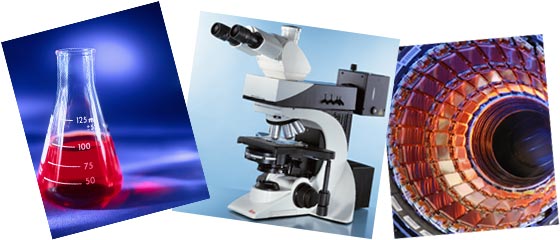 ![[Header]](../XuShared2/Line3.jpeg)

Add a Comment (Go Up to OJB's Blog Page) Favourite Things 1Entry 1475, on 2012-12-10 at 21:44:24 (Rating 2, Science) Today I want to start a series discussing some of my favourite things. There are few things which I just think are astoundingly good, and these can be placed in several categories, but for this edition of my favourite things I am going to talk about one of my favourite achievements of human technology.
Specifically I want to discuss the two Voyager spacecraft. These were launched in 1977 and have been travelling and transmitting data back for the 35 years following. It is expected they might still have enough power to run some instruments up to the year 2030. That's over 50 years of service in space - quite an achievement in any circumstances and even more astonishing when you consider the relatively primitive technology available when they were built and the fact they were originally designed for a 5 year mission.
The Voyagers' primary mission was to explore Jupiter and Saturn, and Voyager 2 went on to visit Uranus and Neptune as well. It took several years to travel from one planet to the next. After leaving Earth in 1977 Voyager 2 arrived at Jupiter in 1979, Saturn in 1981, Uranus in 1985 and Neptune in 1989. The spacecraft discovered rings, new moons, and many other phenomena such as lightning and wind turbulence in the planets. The image quality of images was considerably better than anything else up until then. Try a Google image search for "Voyager images Jupiter" (or Saturn, Uranus, Neptune depending on your favourite planet) to see some examples.
Voyager 1 has now travelled over 18 billion kilometers and Voyager 2 has travelled 15 billion (they took different routes and travelled at different speeds to explore different planets). That puts Voyager 1 beyond the edge of the Solar System at a distance 123 times greater from the Sun than the Earth. It takes radio signals (travelling at the speed of light) almost a day to reach the Earth from this distance.
In about 300,000 years Voyager 2 is expected to approach the bright star Sirius but long before that much faster moving spacecraft will have overtaken it in distance travelled. It does illustrate the scale of the universe though, when you consider that it takes hundreds of thousands of years to travel to even the closest stars.
The team at NASA have done amazing things to keep the spacecraft working. Various systems have been shutdown to preserve power, but the nuclear power source (the three plutonium powered generators which generate almost 500 watts of power in total) are still working after all that time.
Last year (I haven't found an update for 2012) the data upload rate was 16 bits per second. That is the speed data can be sent to the spacecraft. At that rate this blog entry would take over half an hour to send. Data can be sent from the spacecraft to Earth at a somewhat more respectable 160 bits per second!
That may seem slow but although the radios in the Voyagers are about 8 times stronger than what is in your cell phone they are expected to send data about 3 billion times further, so it's not surprising that the data rate has to be kept fairly low. In fact the power reaching Earth from the Voyagers is about one ten million billionth of a watt (0.0000000000000001 W). I have estimated that you would need to gather energy from this signal for hundreds of years to collect enough to be equivalent to a single drop of rain falling!
You might think that a mission like this would be expensive. That depends on your definition of the word expensive but both spacecraft have been designed, launched and operated for under a billion dollars. That's about 8 cents per person (living in the US) per year. It's also 1,500 times less than the cost of the wars in Iraq and Afghanistan. Anyone who says the space program is too expensive just doesn't have a clue what they're talking about!
So I think those little spacecraft (actually they are fairly big and weigh almost a tonne each but I still think of them as small and cute) which are still out there operating on the edge of interstellar space really are a magnificent example of what human science and engineering can achieve, and something which all humans should be proud of.
We need more of this sort of thing and I find it really frustrating when science and engineering budgets (such as NASA's) are cut while thousands of times more is spent on wars and bank bail-outs. After 50 years the Voyagers are something special but In 50 years those wars will just be an unfortunate incident in history and who would possibly care about something as meaningless as a bank?
 There are no comments for this entry. 
You can leave comments about this entry using this form. To add a comment: enter a name and email (both optional), type the number shown above, enter a comment, then click Add.
Note that you can leave the name blank if you want to remain anonymous.
Enter your email address to receive notifications of replies and updates to this entry.
The comment should appear immediately because the authorisation system is currently inactive.
![[Comments]](../XuShared/Comment1B.jpeg) ![[Preview]](../XuShared/Comment6B.jpeg) ![[Blog]](../XuShared/Up2B.jpeg)
Insert query failed: INSERT INTO log VALUES (NULL,1,'2025-12-27','064508','BlogPage.html%3Fcode=1475','XuBlog','216.73.216.208','Mozilla/5.0 AppleWebKit/537.36 (KHTML, like Gecko; compatible; ClaudeBot/1.0; +claudebot@a','');. |

![[Comments]](../XuShared/Comment1B.jpeg)
![[Preview]](../XuShared/Comment6B.jpeg)
![[Blog]](../XuShared/Up2B.jpeg)